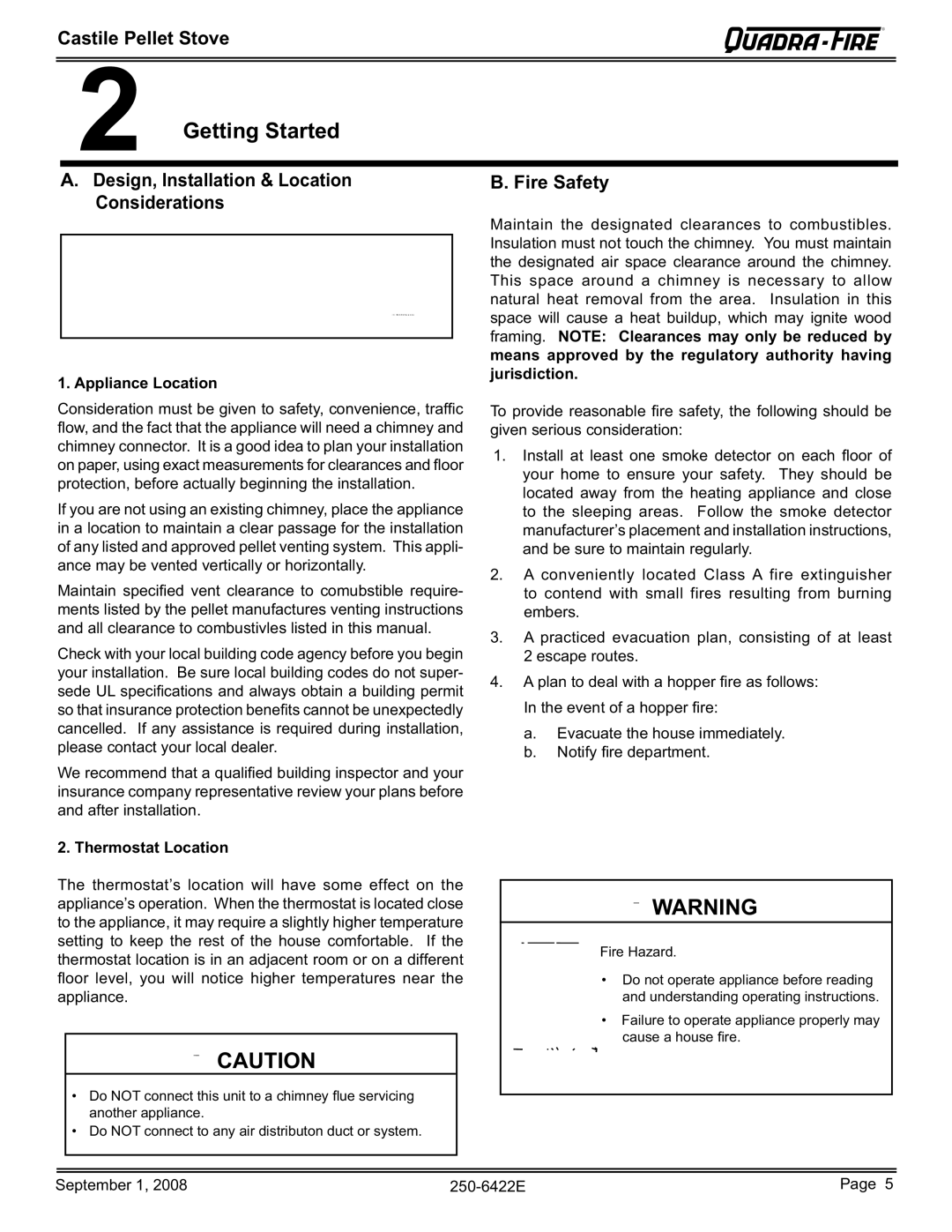CASTILE-PMH1, CASTILE-CSB, CASTILE-MBK1, CASTILE-CWL specifications
Hearth and Home Technologies is renowned for its innovative and efficient heating solutions, among which the CASTILE line of products stands out. The CASTILE-CWL, CASTILE-MBK1, CASTILE-CSB, and CASTILE-PMH1 represent a blend of tradition and modern technology, designed to enhance home comfort while prioritizing energy efficiency and ease of use.The CASTILE-CWL is a versatile unit featuring a sleek design that fits effortlessly into various decors. It incorporates an advanced combustion system that promotes cleaner burning, reducing emissions while delivering robust heat output. Its large hopper capacity minimizes the frequency of refueling, making it ideal for continuous heating. Additionally, the intuitive control panel offers user-friendly operation, allowing homeowners to set their ideal temperature easily.
Next, the CASTILE-MBK1 model boasts a unique design compatible with many different settings. It features enhanced insulation that ensures maximum heat retention and minimizes heat loss. The automatic ignition and advanced safety features ensure that use is not only efficient but also worry-free. Moreover, this model includes a programmable thermostat, giving users the ability to set heating schedules according to their preferences.
The CASTILE-CSB is particularly notable for its integration of modern technology with traditional aesthetics. Its compact design doesn’t skimp on performance, and its high-efficiency rating translates to lower energy bills. With features like a quiet operation system and a digital display for monitoring, the CASTILE-CSB is perfect for homes of any size. The model also offers customizable options for different finishes, allowing homeowners to match their heating source with their interior design.
Finally, the CASTILE-PMH1 rounds out this impressive lineup. This model is designed for reliable performance, providing consistent warmth with its state-of-the-art heat exchanger technology. The chimney venting system enables optimal heat distribution throughout the home while maintaining safety standards. Additionally, it includes features such as an easy-clean design and multiple heat settings, allowing users to tailor their heating experience.
In summary, Hearth and Home Technologies’ CASTILE product line offers an impressive combination of style, efficiency, and advanced features. Each model caters to specific needs while upholding the brand's commitment to quality and innovation, ensuring homeowners can enjoy a warm and inviting living environment.

